
TRACE ROTATING SUNSPOTS
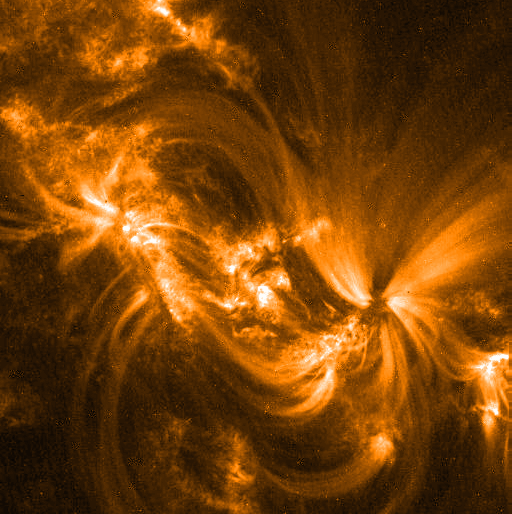

 |
TRACE ROTATING SUNSPOTS |
 |
 |
| 9-AUG-2000 00:16:15 | 9-AUG-2000 06:00:38 | 9-AUG-2000 12:00:27 | 9-AUG-2000 18:01:52 |
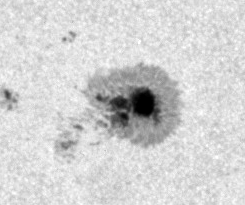 | 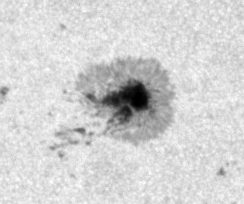 | 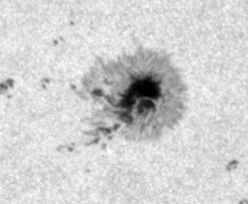 | 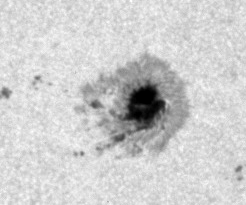 |
Sunspots that rotate about their center have been observed at the photosphere of the sun since early in the 20th century by Hale and others using ground telescopes. Rotating sunspots have become more apparent with the recent availability of high-resolution, high-cadence white light images, as shown above for AR9114, from solar telescopes such as that on the TRACE spacecraft [Brown et al., 2003]. A quick glance at the 4 images above taken about 6 hours apart on August 9, 2000 demonstrates the counter-clockwise rotation of this sunspot. Selecting an image will give a larger area view of the sunspot. The penumbral rotation observed at the photosphere is most likely the observation of the twist, and possibly writhe, that were previously frozen into the omega magnetic field loop at the bottom of the convection layer before its rise to the surface.
| 9-AUG-2000 00:00:38 | 9-AUG-2000 06:01:01 | 9-AUG-2000 12:00:50 | 9-AUG-2000 18:27:16 |
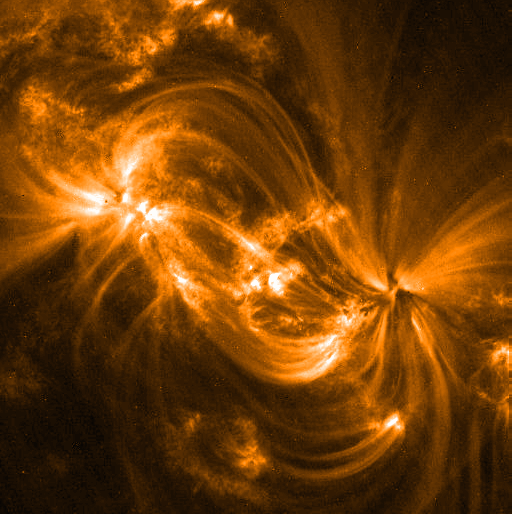 |  | 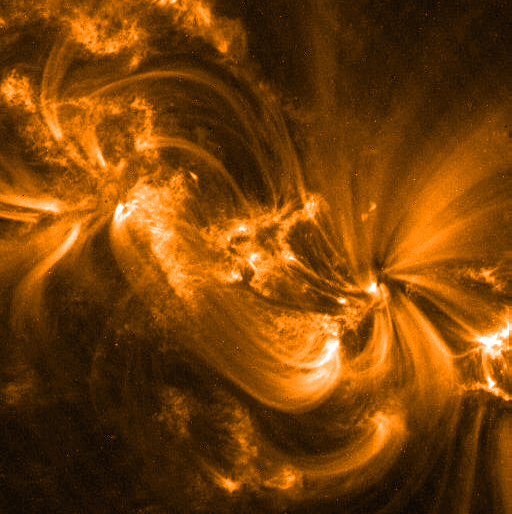 | 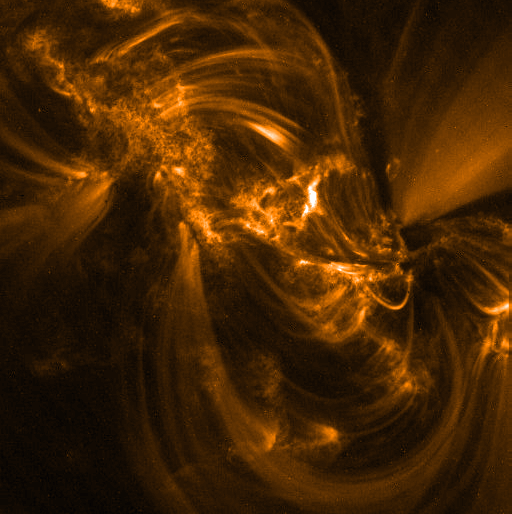 |
The coronal magnetic field loops converging over the sunspot penumbra for AR9114 are shown just above for the one million degree EUV 171Å passband images at 6 hour intervals similar to those of the white light. Larger versions of these images can be seen by selecting an image. It was these loops twisting up by the rotating connections above the sunspot that first caught our attention to rotating sunspots in the TRACE data set. The other ends of the loops do not appear to be rotating. Movies of the rotation and twisting have been made by collecting sets of images of the same region as viewed in one or more wavelengths for some period of time, 3 days in this case, and they can be viewed by selecting the appropriate highlighted text below.
 |
The positive polarity magnetic sunspot region in AR9114 can be seen to the left. Selecting the image will bring up a larger image of the sunspot region. The sunspot, located in the northern hemisphere, rotates as expected in a counter-clockwise direction about its center when one compares a temporal series of TRACE white light images. This can be seen in a (2.6MB MPEG) movie of the sunspot in white light showing the rotation over 3 days during August 8-10, 2000. The rotational speed of the sunspot with respect to radial distance from the center of the sunspot, to the asimuthal position around the sunspot, and to time, can be found by tracking the moving features seen in the movie. A description of such a data analysis process and the results for AR9114 can be found in Brown et al. [2003]. Plots of the rotational speed are also shown below. |
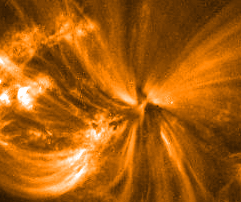 |
In the corona the magnetic field loops appear to twist up into an inverse-S shape (sigmoid structure) due to the rotation of one of the foot points of the cluster of loops attached above the penumbra of the sunspot. This sigmoidal shape of the loops is similar to that seen in the much hotter Yohkoh SXT images, and is considered to be a possible precursor of flaring and/or coronal mass ejection regions. A (2.5MB MPEG) movie in 171Å of the sunspot region shows the twisting of the one million degree magnetic field loops over the 3 days of August 8-10, 2000. |
The two movies above can be blended together using some opacity in the loops to present both the rotating sunspot underneath and the twisting magnetic field loops for the 3 days in a (10.0 MB MPEG) blended movie.
Another example of rotating sunspots can be found in the TRACE Picture of the Day (POD) images at archive 5 where the 4th image is a composite of multi-instrument data for AR9002 and AR9004 (observed on 20 May 2000, 11:12UT) that shows a 195Å TRACE image (1.5 million degrees) in yellow blended with a SOHO/MDI magnetogram (positive polarity in red and negative in black). A short movie (1.5MB QuickTime, JPEG compressed) of the EUV loops presents the changing coronal magnetic configuration. An analysis of one of the rotating sunspots (labeled "A" in the 20 May figure) can also be found in Brown et al. [2003]. More discussion and results on rotating sunspots and their analysis can be found on Daniel Brown's web site.
As can be seen from the images and movies presented above, rotating sunspots driving the twisting coronal fans of loops provide more complexity to the coronal magnetic field loop configuration of active regions, which could possibly lead to flare or CME release.
References:
Brown, D.S., R.W. Nightingale, D. Alexander, C.J. Schrijver, T.R. Metcalf, R.A. Shine, A.M. Title, and C.J. Wolfson, "Observations of Rotating Sunspots from TRACE," Solar Physics, 216, 79-108, 2003.
Last updated July 20, 2004
Page maintained by and send comments to Dr. Richard Nightingale at n i g h t i n g a l e @ l m s a l . c o m